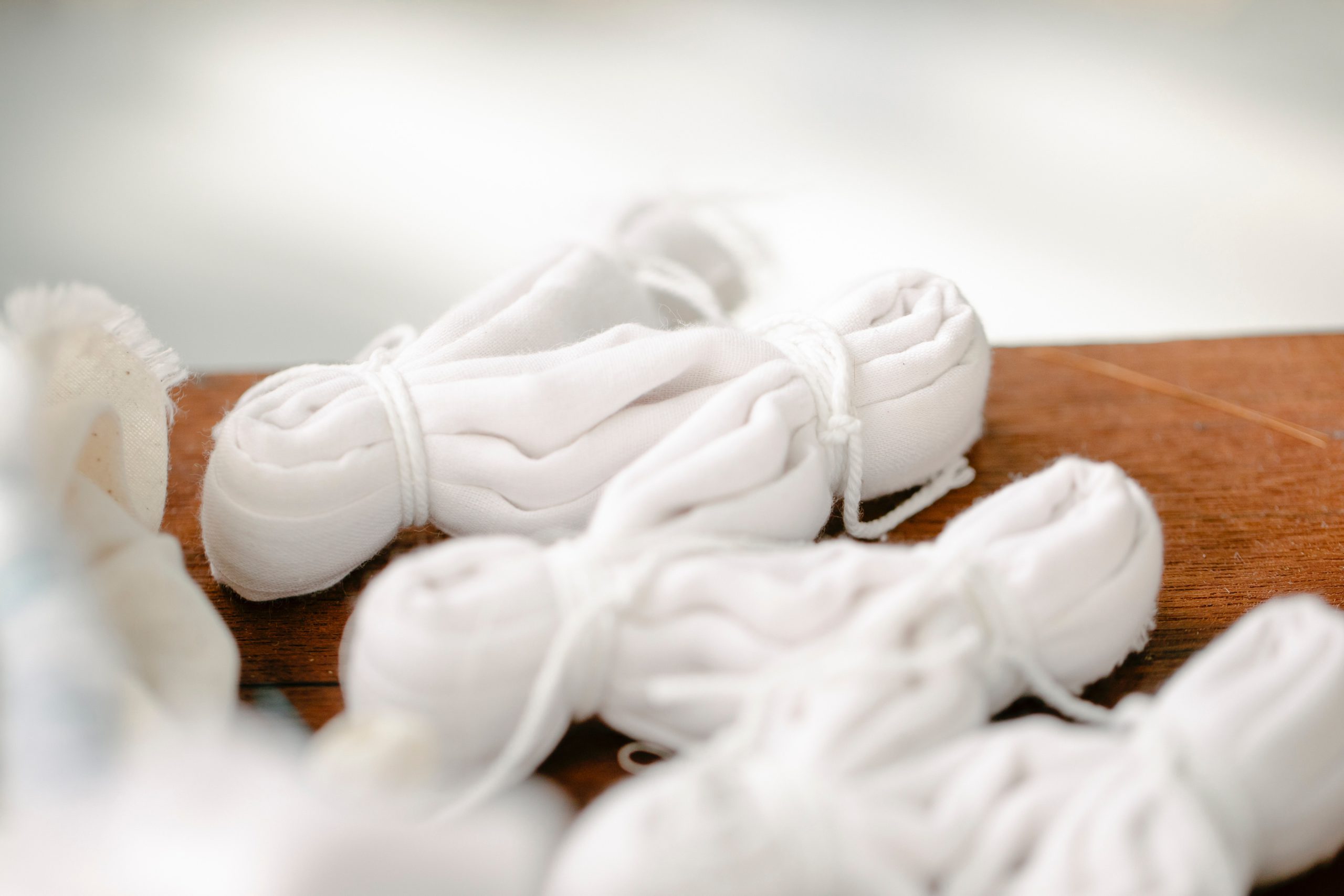Inspired by our latest Earth Dye Collection — that offers you a sustainable way to add some earthy tones to your wardrobe — we’re exploring the different ways you can naturally dye fabric at home using plant material and food scraps.
We love a good eco-friendly DIY project and were delighted to find a rainbow of opportunity waiting for us in our own kitchens. Whether you’re giving an old piece of clothing a new colourful lease on life (kudos for keeping it out of the trash) or getting extra crafty with hand-dyed tea towels or placemats, using natural dyes is an eco-friendly way to bring colour into your home while skipping the chemicals you’ll find in conventional dyes.
1. Choosing Your Colour
You’ll be amazed at the vibrant colours you can achieve using plant material and food scraps. We’ve shared a few of our favourites below, but we recommend you do your own research and experiment with different colour combinations.
Blush Pink – Avocado skins and pits
Magenta – Dried Hibiscus Flower
Deep Red – Beets
Blue – Red Cabbage
Yellow – Ground or fresh turmeric
Orange – Carrot, onion skin
Brown – Coffee, walnut husks
Green – Spinach

2. Preparing Your Fabrics
For the best and most vibrant results, use white or light coloured natural fabrics like cotton, silk, wool, or linen. Avoid using synthetic materials as natural dyes don’t adhere to them well and will usually turn out lighter in colour.
Before you start the dyeing process, you’ll first have to prepare your fabric. If your fabric is new, ensure you give it a wash — but don’t dry it. The general rule of thumb is that your fabric should be wet when you’re dyeing it.
Natural dyes have a harder time binding to fabrics, so you’ll need mordants or fixatives to make sure your colour stays bright, even after washing. To do this, boil your fabric in one of the following solutions for an hour depending on what plant material you’re using.
Fruit Dyes = Salt Fixative
¼ cup salt and 4 cups of water (multiply as needed)
Vegetable and Plant Dyes = Vinegar Fixative
1 cup vinegar and 4 cups water (multiply as needed)
3. Preparing Your Dyes
While your fabric boils, you can start preparing your dye in another pot. Make sure you use one that you don’t mind staining. As a general rule, you will need to use 1 part plant material to 2 parts water, and if you’re using spices, start with 1 or 2 teaspoons for every two cups of water. When everything is combined in the pot, bring it to a boil, then let it simmer for approximately 1 hour.
Use these proportions and timing as your starting point, but don’t be afraid to experiment. After an hour has passed, use a scrap of fabric to test the dye. Continue boiling for a little longer if you want a more intense colour. If the colour is too vibrant, add a little water to dilute the mixture.
Once you’ve reached your desired colour, take your mixture off the stove and transfer it to another mixing bowl or pot using a strainer. Remove the produce from the strainer and put it in the compost. Transfer your dye mixture back into the original pot and return it to the stovetop. You’re now ready to begin dyeing.
4. Dyeing Your Fabric
Ensure you’re wearing gloves for this stage. Remove your fabric from its fixative solution and rinse under cold water. If you want your fabric to be uniform in colour, submerge it entirely in your dye. If you want to try creating different patterns, tie and knot your fabric as desired before submerging. We grabbed some major inspiration from this article that walks you through different Japanese folding techniques known as shibori.

Once your fabric is submerged in the pot, bring it to a low simmer for approximately an hour. Again, you’ll want to experiment here with timing to achieve your desired shade. The longer you leave your fabric submerged, the deeper the colour. After an hour, turn off the heat and either remove your fabric or leave it in the water overnight for a more vibrant colour. Just keep in mind that your fabric will lose some of its colour once you rinse it.
Remove the fabric from the pot once you’re happy with the colour, rinse it under cold water and then hang it to dry. An important note: when you put your dyed fabric in the wash for the first time, place it in a separate load to ensure the dyes don’t bleed onto your other clothing.
Using plant-based dyes is an easy and natural way to add some colour to your wardrobe and home. Remember, there is no right or wrong way; you might even end up with a new favourite colour by the time you’re done.
Keep Reading
7 DIY Eco-Friendly Household Cleaning Products You Can Make Now
By planting ten trees for every item you purchase, it’s our mission to plant 1 billion trees by 2030. Head to our website to learn more and begin your planting journey with 10% off.

